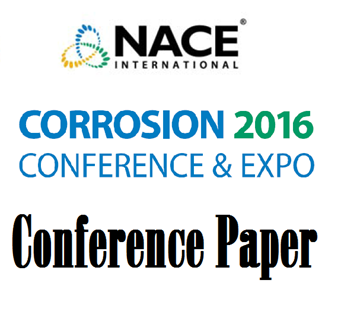Search
Energy Generation
View as
Sort by
Display
per page
51316-7166-Corrosion of Nickel Alloys for Steam Generator Tubing of Pressurized Water Reactors
Product Number:
51316-7166-SG
ISBN:
7166 2016 CP
Publication Date:
2016
$20.00
51316-7223-Corrosion Assessment of Pipeline Steels in Supercritical Carbon Dioxide Stream
Product Number:
51316-7223-SG
ISBN:
7223 2016 CP
Publication Date:
2016
$20.00
51316-7237-Corrosion Assessment of Nickel-based Alloy Candidates for SCWR Fuel Cladding
Product Number:
51316-7237-SG
ISBN:
7237 2016 CP
Publication Date:
2016
$20.00
51316-7244-Eddy Current for Sizing Cracks in Canisters for Dry Storage Casks – Laboratory Measurements”
Product Number:
51316-7244-SG
ISBN:
7244 2016 CP
Publication Date:
2016
$20.00
51316-7245-Corrosion Risk Assessment and Cathodic Protection for Aging Electric Utility Transmission Sructures
Product Number:
51316-7245-SG
ISBN:
7245 2016 CP
Publication Date:
2016
$20.00
51316-7296-UNS N06055 High Chromium welding product provides resistance to PWSCC in service and to DDC and Soli
Product Number:
51316-7296-SG
ISBN:
7296 2016 CP
Publication Date:
2016
$20.00
51316-7361-Corrosion Behavior of Duplex Stainless Steel UNS 31803 in Artificial Geothermal Waters
Product Number:
51316-7361-SG
ISBN:
7361 2016 CP
Publication Date:
2016
$20.00
51316-7363-Suitability of High Alloyed Materials in Molten Salts at 600 °C
Product Number:
51316-7363-SG
ISBN:
7363 2016 CP
Publication Date:
2016
$20.00
51317-9174-Challenging AC Corrosion Mitigation System for 100-Mile Long Pipeline
Product Number:
51317-9174-SG
Publication Date:
2017
$20.00
51317--9364-New Developments in Coatings for Extended Lifetime for Offshore Wind Structures
Product Number:
51317--9364-SG
ISBN:
9364 2017 CP
Publication Date:
2017
$20.00
51317-9481- Benefits of Partial Removal of Corrosion Deposits from Nuclear Steam Generators: ASCA and CODE Applications
Product Number:
51317-9481-SG
ISBN:
9481 2017 CP
Publication Date:
2017
$20.00
51317--9485-Modern Electric Power Substation Failure Case Histories and Mitigating Strategies
Product Number:
51317--9485-SG
ISBN:
9485 2017 CP
Publication Date:
2017
$20.00












